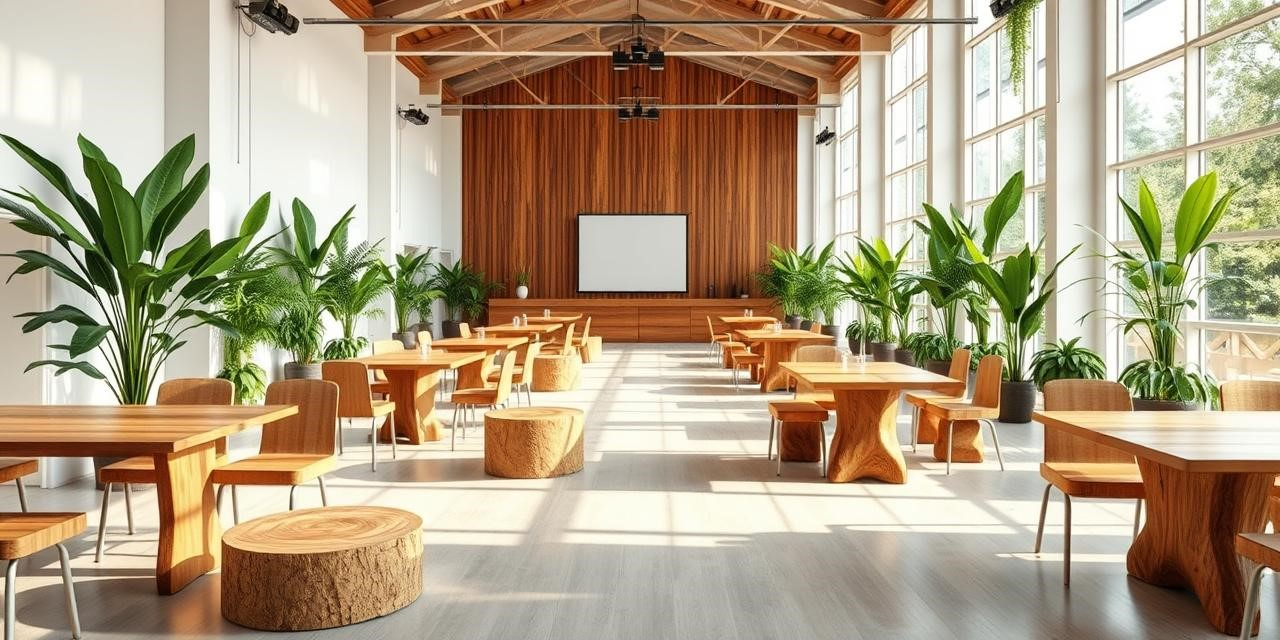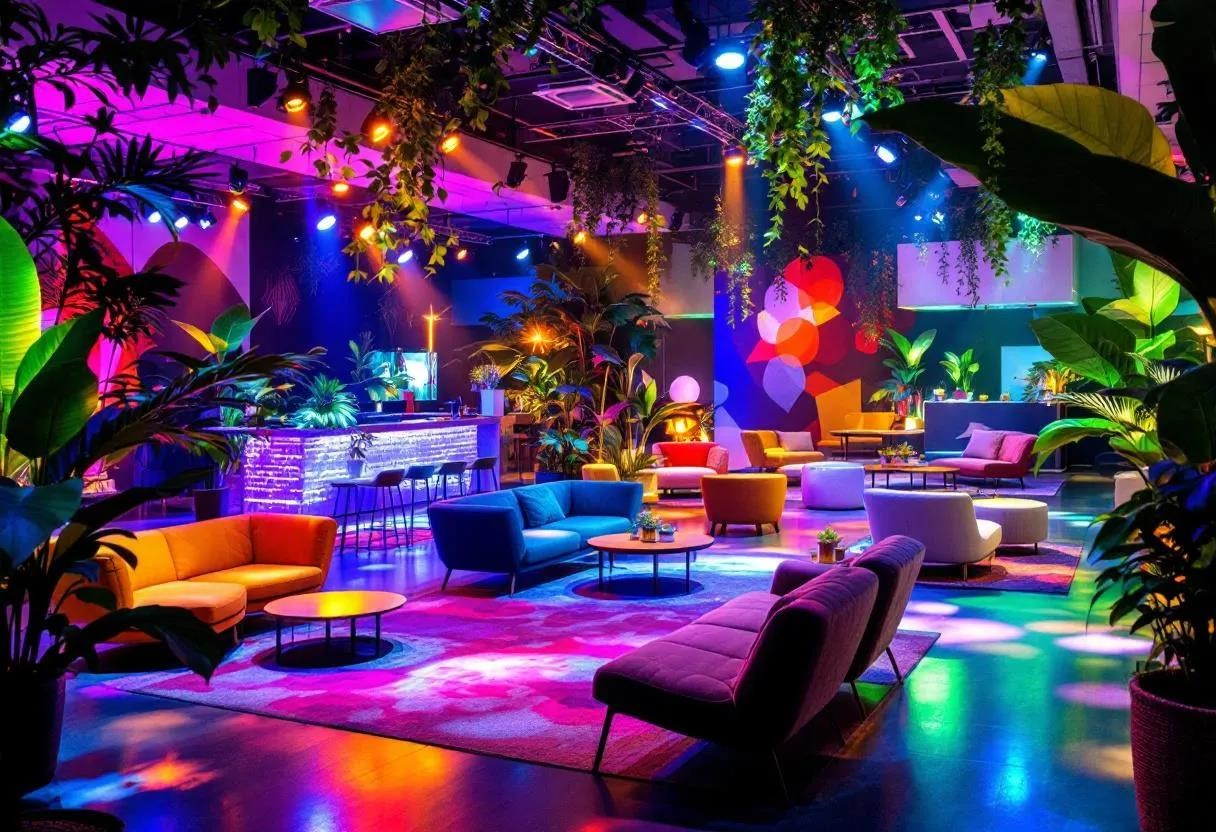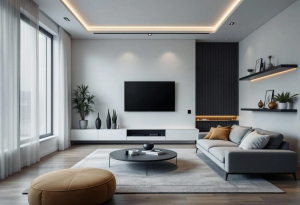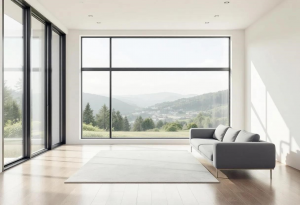Hey, it’s Ethan Bellweather here. For years, I’ve been neck-deep in the architecture and design scene. From my days at SOM to launching Bellweather Design Studio, I’ve witnessed spaces morph, adapt, and ultimately, define our experiences. And guess where this transformation is most obvious? Event spaces. Forget those stuffy, old-school ballrooms. Today, it’s about crafting immersive, unforgettable environments that truly connect with people.
The Rise of the Experience: How Event Spaces Transformed
Let’s take a quick trip down memory lane. Remember when event spaces were purely functional? Big, often bland rooms meant to cram in as many people as possible. Think basic banquet halls and yawn-inducing conference centers. Aesthetics? Usually an afterthought. But, as we got smarter about human psychology and the power of environment, event design got a serious upgrade. We started seeing spaces that did more than just serve a purpose; they told stories, stirred emotions, and amplified the whole experience.
This evolution was fueled by tech advancements, a growing eco-consciousness, and the demand for unique, engaging experiences. Today’s event spaces are dynamic, adaptable, and often pack a delightful surprise.
Going Green: Sustainability Steals the Show
One of the biggest changes I’ve seen? The rock-solid commitment to sustainability. Clients are demanding eco-friendly solutions, and designers are answering the call with creative approaches to materials, energy, and waste. It’s not just a trend; it’s about hosting events that respect the planet.

We’re talking recycled and reclaimed materials, energy-sipping lighting, and smart waste reduction. Biophilic design – bringing in natural elements like plants and sunlight – is also blowing up. Not only does it chill people out and boost their well-being, but it also makes spaces look amazing. Imagine a conference room with the gentle sound of water or a networking event surrounded by plants – those are the experiences people remember.
Tech Time: Leveling Up the Experience
Technology has completely changed event design, opening up awesome ways to wow guests. I’m not just talking basic projectors. Think smart lighting that sets the mood, interactive displays that grab attention, and killer sound systems that deliver crystal-clear audio. It’s all becoming standard.
But the real magic happens when tech blends seamlessly into the design. Picture this: augmented reality that brings a brand’s story to life or virtual reality that transports attendees to a different world. These immersive technologies create unforgettable moments and forge deeper connections with the event or brand.
Get Personal: The Power of Meaning
In a world of mass-produced everything, people crave personalization. Event spaces are no different. Clients want events that scream their unique identity and connect with their audience. That means ditching generic décor and diving into custom themes, branding, and interactive experiences tailored to the event and its attendees.
From custom furniture to personalized lighting, the sky’s the limit. The trick is to get the client’s vision and turn it into something real and engaging. Maybe it’s showcasing local art, highlighting the company’s history, or creating interactive installations where attendees can share their ideas.
Flexibility Rules: Modular Design for the Win
Let’s face it, one size never fits all when it comes to events. That’s why flexible, modular layouts are gaining serious traction. These adaptable spaces can be easily tweaked for different event types and sizes, from small workshops to massive conferences.
Modular furniture, movable walls, and adaptable lighting let event planners create diverse environments within the same space. This maximizes the venue’s potential and sparks creativity. Imagine a conference center that transforms into a concert hall in hours – that’s the magic of modular design.
Nature Inside: Biophilic Design for the Soul
Like I said earlier, biophilic design is a game-changer for creating engaging and restorative event spaces. By bringing in natural elements like plants, sunlight, and water, we can create environments that chill people out, boost their well-being, and unleash their creativity. Studies show that being around nature can sharpen your mind, lift your mood, and even lower your blood pressure.
But biophilic design is more than just scattering a few plants. It’s about creating a deep connection with nature through smart design. Think natural materials like wood and stone, tons of natural light through skylights and big windows, or outdoor spaces that flow seamlessly into the indoors.
What’s Next? Emerging Trends and Innovations
The world of event space design never stands still, and it’s exciting to imagine what’s coming. We’re already seeing new technologies like augmented and virtual reality reshape how we experience events. As these technologies get better and more accessible, they’ll definitely play a bigger role in event design.
I also think we’ll see even more emphasis on sustainability and personalization. Clients will demand greener solutions and more custom experiences that reflect their values. The key to winning in this ever-changing world is to embrace innovation, stay curious, and never stop learning.
Final Thoughts
Event space design has come a long way from those boring ballrooms. Today, it’s a dynamic, innovative field that’s constantly evolving to meet the needs of clients and attendees. By embracing sustainability, tech, personalization, and biophilic design, we can create event spaces that are not just functional but also unforgettable, engaging, and truly transformative.
Frequently Asked Questions
- What are the essential ingredients for sustainable event space design? Recycled materials, energy-efficient lighting, waste reduction, and biophilic design are key.
- How does technology amplify the event experience? Smart lighting, interactive displays, augmented reality, and virtual reality create immersive, engaging experiences.
- Why is personalization so important in event design? It builds a meaningful connection with attendees, reflecting the client’s unique identity and values.
- What are the perks of biophilic design? It reduces stress, improves well-being, enhances creativity, and connects us with nature.
- How can flexible layouts improve event spaces? They allow for easy reconfiguration, accommodating various event types and sizes.
So, next time you’re planning an event, remember that the space itself is a powerful tool for creating an unforgettable experience. Embrace the evolution, try new things, and don’t be afraid to push the envelope. The future of event space design is bright, and I can’t wait to see what we create together.


